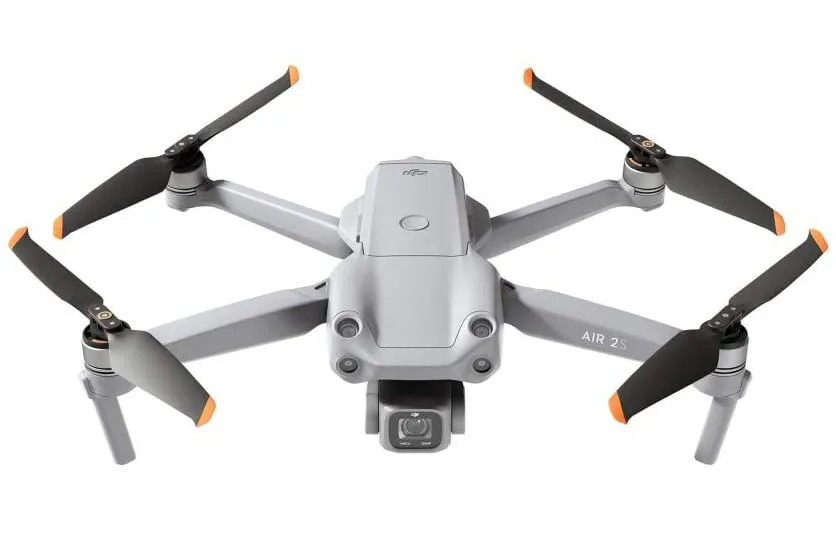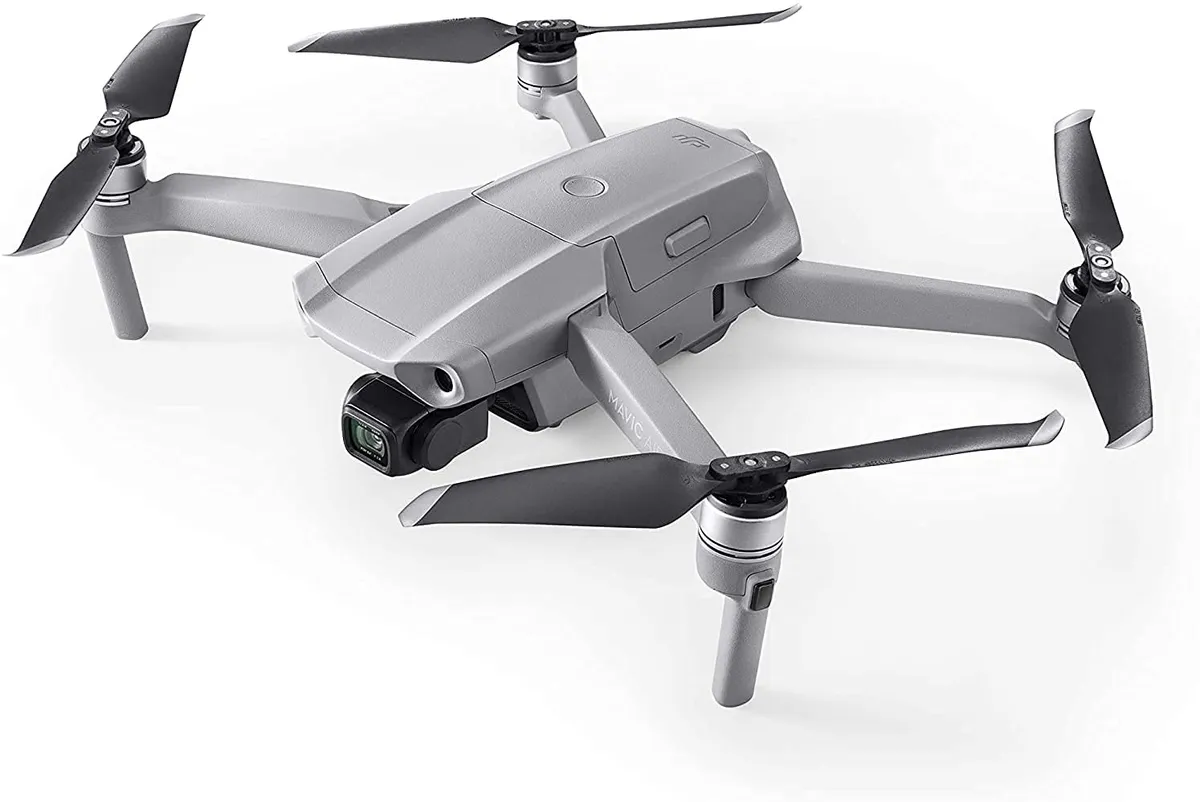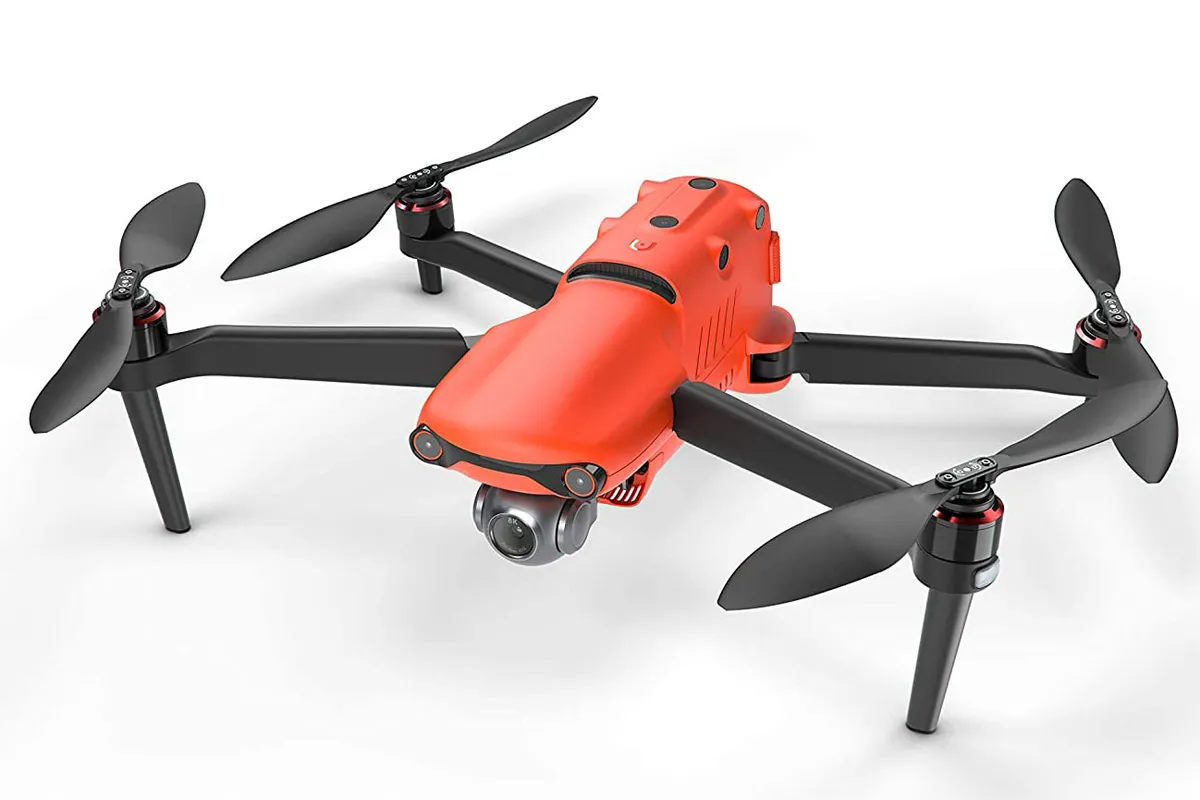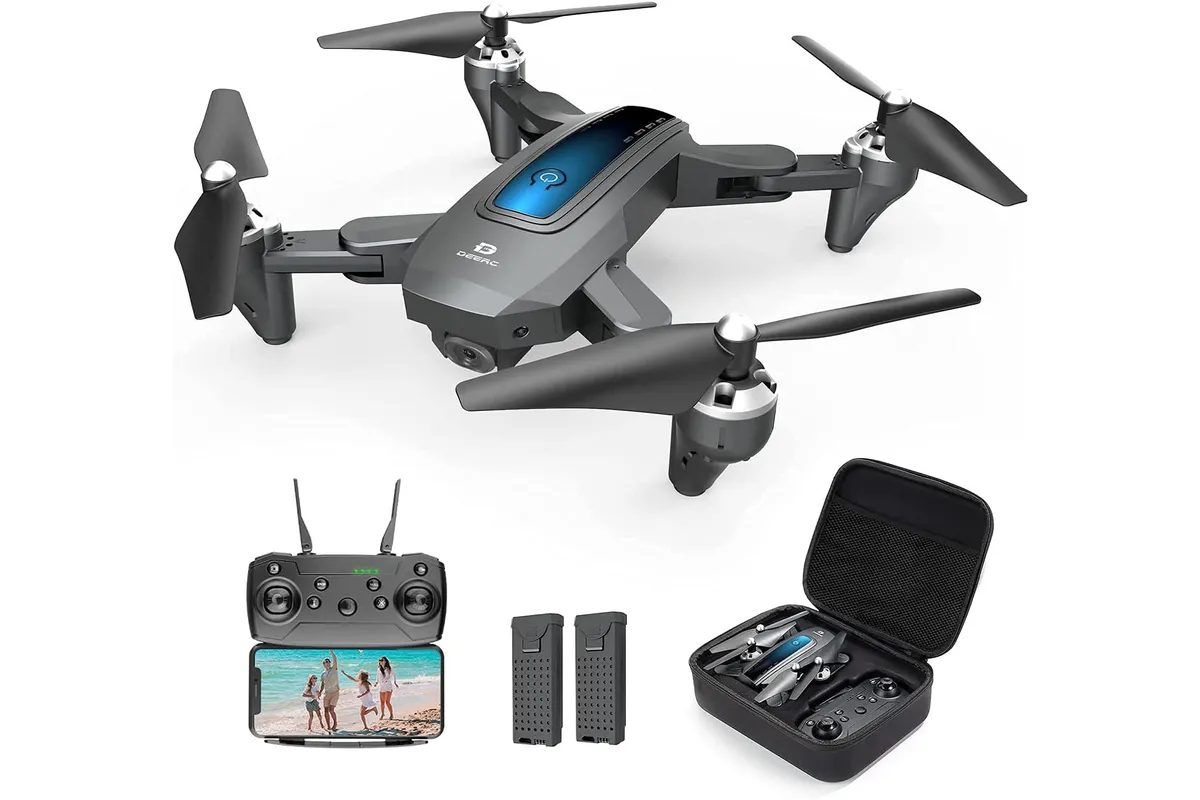Capturing dramatic photos, shooting high-resolution videos, performing air stunts... Drones can do a lot these days. The technology is advancing to improve drone usability, camera quality and much more, so the range of drones available is growing. DJI continue to dominate the market, with most of their models making up the most well-reviewed drones out there.
Here's our selection of the best drones to buy for a number of different price ranges. Whether you're looking for an easy-to-use model for beginners, or bring your drone work to a professional, experienced level, check out our list below.
Best drones to buy in 2024
DJI Air 2S
SQUIRREL_TEXT_13106994

The DJI Air 2S is an impressive all-rounder, having some of the best features from some of DJI's most advanced drones. It stands out in its ability to capture details in photos and videos, thanks to its 1-inch image sensor and 2.4μm pixels. It also has a number of features to streamline image capturing: FocusTrack can help the drone follow or circle a subject while MasterShots can determine the best shot.
The 20MP camera on the DJI Air 2S can shoot 5.4k video and can transmit a 1080p feed to a device up to 12km away. All of this tech is packed into a compact 595g drone that can travel up to 19 metres per second.
SQUIRREL_13106994
DJI Mavic Air 2

A popular choice for the mid-high price range, the DJI Mavic Air 2 has you covered for just about everything you'd want to achieve. It has cinematic capture that supports 8k Hyperlapse for immersive, city-spanning footage. The camera is positioned on a 3-axis gimbal for smooth image recording and it can shoot 4k video at 60fps.
The drone has a battery life of up to 34 minutes and a transmission distance of up to 6km, so you can fly a decent distance and still pick up the 1080p FHD stream. The Mavic Air 2 tracking technology, POI 3.0, can lock on to subjects and keep them in the centre of the shot.
DJI Mini 2

If you're looking for something more affordable, the DJI Mini 2 is a widely popular choice. The drone shares many features with some of the higher-end models in its range packed into a lighter, more compact drone.
The 12MP camera can shoot 4k video at 30fps and it's on a 3-axis gimbal for smooth rotation and positioning. Even in its small size, the Mini 2 can resists level 5 winds. Plus, it can take off at a maximum altitude of 4000 metres while being able to zoom up to 4x. For an under-£500 drone, the Mini 2 has an impressive amount of tech.
Autel EVO II
- Buy now from Autel (£5899.00).

The Autel EVO II has one of the most advanced cameras out there, but it's also one of the most expensive. The camera can shoot 8k video at up to 7680 x 4320 resolution and stills at up to 8000 x 6000 resolution. These images are large enough to fit 100" prints, making this a fitting choice for professional use.
The EVO II was designed with versatility in mind, so pilots can alternate between 8k, 6k and dual thermal/8k payload options. The 1.1kg drone can take off in 30 seconds, and other streamlining features, like the quick release propellers and built-in locking mechanism, allow for an ergonomically designed drone.
Ryze Tello

The Ryze Tello drone, from drone-experts DJI, is a fun, affordable choice if you're not looking to spend too much. The drone can perform stunts and up to 8 different flips by swiping your finger on the touchscreen control.
The small drone weighs only 80g and has a battery life of up to 13 minutes. An interesting feature is the ability to program your own flight patterns using the Tello coding system.
DJI Mavic 3

The Mavic 3 is one of DJI's most expensive models, and they claim the camera is advanced enough to bring your footage to a professional level. This is done with a 4/3 CMOS Hasselbad camera that can shoot 5.1k video and a sensor with a dynamic range of 12.8 stops, to retain more details in light and shadow.
A notable feature on the Mavic 3 is its intelligent return function, where it can optimise a safe return to its starting point while using omnidirectional obstacle avoidance. Plus, it has a maximum transmission distance of up to 15km.
DJI Mavic Mini

This is one of the most compact drones in its range - making it one of the safest and most portable options available. It weighs under 250g which is almost as light as the average smartphone.
It features a 12MP camera that can record 2.7k Quad-HD video, on a 3-axis gimbal for added stability. Its remote controller can receive an HD stream up to 4km away. An added bonus is the DJI Fly app that includes a flight tutorial.
DEERC D10

The DEERC D10 is designed to be user-friendly and ideal for beginners. The tech isn't too advanced, which is reflected in its under-£100 price tag, but it can achieve a lot for somebody looking to start piloting drones.
It can shoot HD footage from up to 100m away and it can fly for up to 24 or 30 minutes, depending on the battery. There are also voice and interactive commands, such as saying 'take off' or waving your arm in the direction you want it to fly.
What are the rules on flying drones in the UK?
In the UK, the regulations for flying drones are primarily governed by the Civil Aviation Authority (CAA). As of 2023, the following rules are applicable:
Registration: All drones weighing 250 grams or more must be registered with the CAA, and the operator must obtain an Operator ID.
Drone Categories: Drones are categorized based on their weight and capabilities. The specific requirements and restrictions may vary depending on the category, such as the need for certain certifications or authorizations for specific operations.
Drone Operators: Drone operators are responsible for flying their drones safely and legally. They must have a Flyer ID and follow the Drone and Model Aircraft Code.
Flying Restrictions: Drones must not be flown higher than 120 meters above ground level or within 1 kilometre of airport boundaries. They must maintain a distance of at least 50 meters from people, vehicles, buildings, and structures not under the operator's control. If you're flying a drone that weighs under 250g, you can fly within 50m of and over people. Never fly within 50m of or over crowds of people, regardless of the weight of your drone, as crowds are unable to disperse quickly in the event of an emergency.
Special Flight Zones: Certain areas, such as airports, military installations, and congested areas, have additional restrictions or require specific permissions for drone flight.
Remote Pilot Competency: The person operating a drone must have the necessary competency and knowledge to fly safely. In some cases, this may involve completing a training course and obtaining a certificate.
When it comes to finding the best camera drone to capture breath-taking aerial footage, the choices available today offer impressive capabilities and features. From advanced flight controls to high-resolution cameras, these technological marvels have revolutionized the world of photography and videography. Always remember to check the rules before using a drone, and fly safely!
Looking for more camera equipment for professional-looking images? Check out our roundup of the best camera gimbals to buy in 2024.
